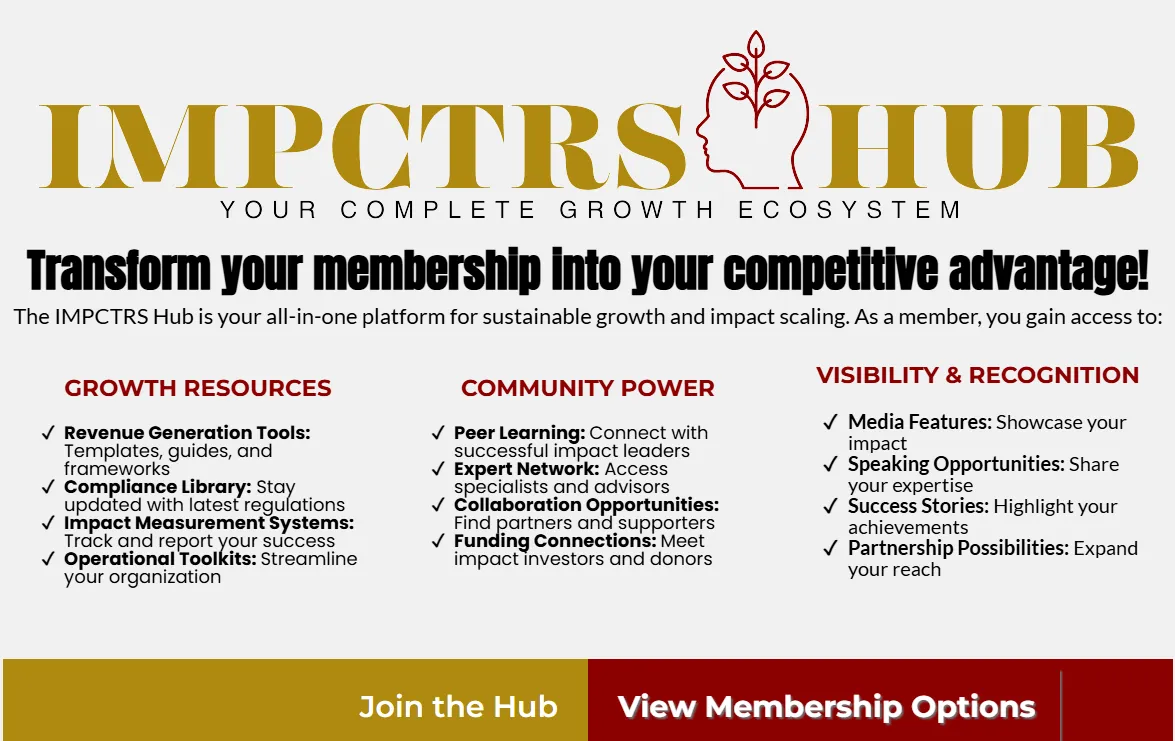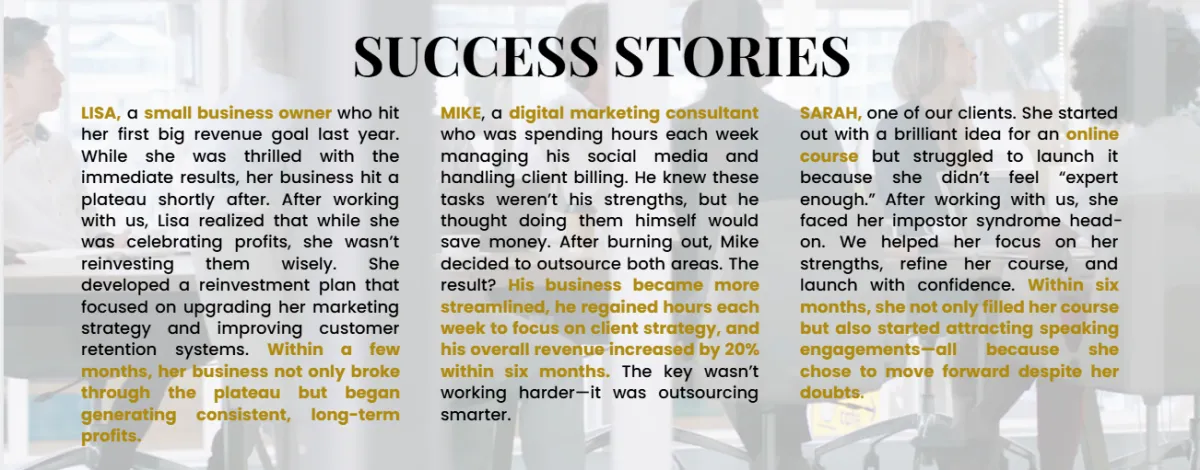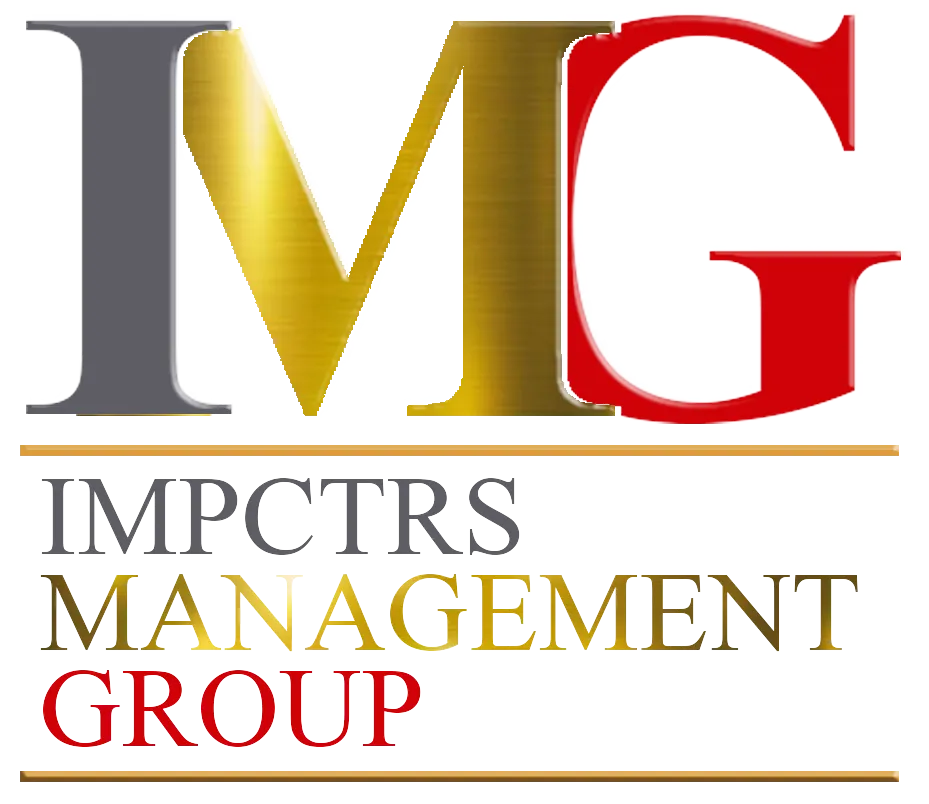See Our Latest Blogs
The Impctrs Management Group blog is where strategy meets action. We deliver powerful insights, practical strategies, and AI-driven solutions designed to help social impact businesses amplify their reach, fund their missions, and scale their operations sustainably. Every article is crafted to equip you with the knowledge and tools to lead with purpose and grow with confidence.

The 7-Step Guide to Effective Nonprofit Succession Planning: Ensuring Organizational Continuity
"Succession planning isn't merely organizational housekeeping—it's the invisible bridge that carries your mission forward when leadership waters become turbulent." — Tracy V. Allen
What is Succession Planning?
Succession planning is a systematic, strategic process that organizations undertake to identify and develop high-potential internal talent capable of filling critical leadership positions. This proactive approach ensures organizational continuity when key personnel depart unexpectedly due to resignation, illness, death, or planned retirement.
Effective succession planning extends beyond merely identifying a replacement; it involves comprehensive knowledge transfer, skills development, and cultural alignment to maintain organizational momentum during leadership transitions. Unlike reactionary hiring, succession planning represents a forward-thinking investment in your organization's stability and mission continuity.
For nonprofits in particular, where mission delivery often depends heavily on relationships and institutional knowledge, succession planning becomes an essential risk management strategy. Research shows that organizations with robust succession plans recover from leadership transitions 60% faster and maintain higher program effectiveness during periods of change than those without such plans.
The High Stakes of Leadership Transitions
What Happens When There Is NO Succession Plan?
Organizations without succession plans face numerous destabilizing consequences when leadership suddenly changes:
Operational Disruption
Without a clear successor who understands organizational systems and processes, daily operations can quickly deteriorate. Critical decisions may be delayed, deadlines missed, and service quality compromised. This operational instability can cascade through all levels of the organization, affecting everyone from front-line staff to those in senior positions.
Financial Vulnerability
Leadership vacuums often trigger financial instability. According to nonprofit sector studies, organizations experiencing unplanned leadership transitions without succession plans in place report an average 30% drop in fundraising effectiveness during the transition period. This financial impact occurs through:
Delayed grant applications and reporting
Interrupted donor cultivation
Stalled capital campaigns
Reduced program revenue
Inefficient financial management practices
Stakeholder Confidence Crisis
When an organization appears rudderless, stakeholder confidence erodes quickly. Donors, particularly major contributors and foundations, may withhold funding until leadership stability returns. Board members may become overly involved in day-to-day operations, blurring governance boundaries. Staff anxiety increases, often leading to additional departures that compound the leadership crisis.
Mission Drift
Perhaps most concerning for mission-driven organizations, the absence of leadership continuity planning can lead to mission drift. Without champions who deeply understand organizational history and values, decision-making can become disconnected from founding principles. This shift may happen subtly but can fundamentally alter organizational identity over time.
Prolonged Recovery
Organizations without succession plans typically experience significantly longer recovery periods after leadership changes. What might have been a 3-6 month transition with proper planning often extends to 18-24 months without it, representing substantial opportunity costs in terms of mission advancement.
The 7-Step Succession Planning Framework
Implementing a comprehensive succession plan requires methodical execution across seven critical stages. Each step builds upon the previous, creating a robust framework for leadership continuity.
1. Strategic Leadership Assessment and Future Planning
Key Activities:
Conduct a facilitated board and leadership team retreat focused specifically on succession planning
Perform a thorough organizational assessment identifying strategic priorities for the next 3-5 years
Map required leadership competencies against future organizational needs
Create emergency succession protocols for immediate contingencies
Establish a succession planning committee with clear responsibilities
Implementation Tips: Begin this conversation during a period of leadership stability, not during crisis. Frame succession planning as strategic risk management rather than replacement planning for specific individuals. Include diverse perspectives in these discussions, ensuring representation from various organizational levels and stakeholder groups.
Succession planning discussions should occur annually, with more comprehensive reviews every three years or whenever significant strategic shifts occur. Document these conversations and decisions in a formal succession planning policy that the board approves.
2. Comprehensive Role Documentation
Key Activities:
Develop detailed position profiles for all leadership roles
Document both formal responsibilities and informal organizational knowledge
Identify key relationships each position maintains internally and externally
Map decision-making authority and approval processes
Catalog institutional history and context that inform leadership decisions
Implementation Tips: Go beyond standard job descriptions to capture the nuanced aspects of leadership roles. Have current position holders maintain a "leadership journal" documenting non-obvious aspects of their role. Consider using structured knowledge elicitation techniques to capture tacit knowledge that leaders may not consciously recognize they possess.
Position documentation should be reviewed and updated quarterly to remain current. Store these documents securely but make them accessible to authorized personnel during transitions.
3. Process Documentation and Knowledge Management
Key Activities:
Create comprehensive procedure manuals for critical operational functions
Develop multimedia training resources (videos, screenshots, process maps)
Implement a knowledge management system to organize institutional information
Document vendor relationships, contract terms, and key external partnerships
Establish regular knowledge-sharing practices across the organization
Implementation Tips: Prioritize documentation of mission-critical processes first. Utilize screen recording software and video demonstrations for complex processes. Implement a consistent documentation format across departments. Consider using a "documentation day" quarterly where staff focus on updating process documentation.
Make knowledge management part of everyone's job description, not an afterthought. Create incentives for comprehensive documentation and knowledge sharing through performance reviews and recognition programs.
4. Talent Assessment and Career Development Conversations
Key Activities:
Conduct structured career aspiration interviews with all staff members
Implement formal talent assessment processes identifying future leadership potential
Create individual development plans aligned with succession needs
Establish mentoring relationships between current and potential future leaders
Incorporate succession discussions into regular performance reviews
Implementation Tips: Create psychological safety when discussing career aspirations by separating these conversations from performance evaluations. Use standardized assessment tools to reduce bias in identifying leadership potential. Focus on developing versatile leadership competencies rather than preparing someone for a specific role.
Normalize conversations about career development and advancement opportunities. Create a culture where developing others is viewed as a leadership responsibility, not a threat to current position holders.
5. Intentional Cross-Training and Leadership Development
Key Activities:
Implement structured job shadowing programs for critical positions
Create stretch assignments allowing potential successors to develop new skills
Establish cross-functional projects exposing staff to different organizational areas
Provide formal leadership development training and educational opportunities
Create deputy or assistant roles for key leadership positions
Implementation Tips: Begin cross-training with short-term coverage (vacations, conferences) before progressing to longer developmental assignments. Create clear learning objectives for each cross-training opportunity. Ensure cross-training occurs across departments, not just within silos.
Balance operational needs with development opportunities. Recognize that effective cross-training may require temporary productivity decreases as staff learn new responsibilities. Budget for external leadership development resources, including coaching and formal education.
6. Succession Plan Testing and Refinement
Key Activities:
Schedule planned leadership absences to test succession readiness
Conduct tabletop exercises simulating emergency succession scenarios
Gather feedback from all participants after succession tests
Document lessons learned and refine the succession plan accordingly
Progressively increase the complexity and duration of succession tests
Implementation Tips: Start with low-risk testing scenarios before progressing to more critical functions. Create realistic conditions during testing, including limited access to the person being replaced. Document what works well and what creates challenges during these trial periods.
Use succession plan testing as developmental opportunities, not evaluative ones. Ensure the board participates in appropriate aspects of succession testing, particularly for executive leadership positions. Celebrate successful succession tests to reinforce their importance.
7. Recruitment Strategy Development
Key Activities:
Identify persistent leadership gaps not addressable through internal development
Create position profiles for external recruitment when necessary
Develop relationships with sector-specific recruitment resources
Establish an ongoing talent pipeline through professional networks
Create onboarding procedures specifically designed for external leadership hires
Implementation Tips: View external recruitment as complementary to internal development, not a replacement for it. Use identified gaps from succession planning to inform targeted recruitment strategies. Consider creating associate or fellowship programs to develop specific leadership competencies your organization consistently lacks.
Involve potential internal successors in the recruitment and onboarding of external leaders to facilitate knowledge transfer and cultural integration. Budget adequately for competitive compensation to attract required talent.
Implementing Succession Planning: Practical Considerations
For Small Organizations
Resource constraints in small organizations require pragmatic approaches to succession planning:
Prioritize documentation of founder/executive director responsibilities
Engage board members as interim leadership resources
Create shared leadership models distributing critical knowledge
Partner with peer organizations for leadership development resources
Focus on cross-training for essential operational functions
For Mature Organizations
Established organizations face different succession challenges:
Address potential succession bottlenecks created by long-tenured leaders
Implement phased retirement options facilitating knowledge transfer
Create leadership development pathways across departments
Establish alumni networks maintaining connections with former employees
Develop succession metrics measuring organizational readiness
For Organizations in Transition
Organizations currently experiencing leadership changes should:
Document critical knowledge before departing leaders leave
Create transition committees with clear authority and responsibilities
Establish interim leadership protocols with defined timelines
Develop comprehensive onboarding processes for incoming leaders
Create explicit knowledge transfer expectations for departing leaders
From Succession Planning to Succession Management
Effective succession planning represents an evolutionary shift from reactive replacement to proactive leadership continuity management. By implementing the seven-step framework outlined above, organizations create resilience against leadership disruptions while simultaneously developing their most valuable asset—their people.
Remember that succession planning is not a one-time project but an ongoing organizational practice requiring regular attention and refinement. The investment made in succession planning pays dividends through enhanced organizational stability, improved talent retention, and uninterrupted mission delivery.
As Peter Drucker wisely noted, "The ultimate test of leadership is not what happens during a leader's tenure, but what happens after they depart." A robust succession plan ensures your organization's mission continues uninterrupted regardless of leadership changes, creating the legacy that truly matters.




Transform your membership into your competitive advantage!
The IMPCTRS Hub is your all-in-one platform for sustainable growth and impact scaling. As a member, you gain access to:
GROWTH RESOURCES
Revenue Generation Tools: Templates, guides, and frameworks
Compliance Library: Stay updated with latest regulations
Impact Measurement Systems: Track and report your success
Operational Toolkits: Streamline your organization
COMMUNITY POWER
Peer Learning: Connect with successful impact leaders
Expert Network: Access specialists and advisors
Collaboration Opportunities: Find partners and supporters
Funding Connections: Meet impact investors and donors
VISIBILITY & RECOGNITION
Media Features: Showcase your impact
Speaking Opportunities: Share your expertise
Success Stories: Highlight your achievements
Partnership Possibilities: Expand your reach
SUCCESS STORIES
LISA, a small business owner who hit her first big revenue goal last year. While she was thrilled with the immediate results, her business hit a plateau shortly after. After working with us, Lisa realized that while she was celebrating profits, she wasn’t reinvesting them wisely. She developed a reinvestment plan that focused on upgrading her marketing strategy and improving customer retention systems. Within a few months, her business not only broke through the plateau but began generating consistent, long-term profits.
MIKE, a digital marketing consultant who was spending hours each week managing his social media and handling client billing. He knew these tasks weren’t his strengths, but he thought doing them himself would save money. After burning out, Mike decided to outsource both areas. The result? His business became more streamlined, he regained hours each week to focus on client strategy, and his overall revenue increased by 20% within six months. The key wasn’t working harder—it was outsourcing smarter.
SARAH, one of our clients. She started out with a brilliant idea for an online course but struggled to launch it because she didn’t feel “expert enough.” After working with us, she faced her impostor syndrome head-on. We helped her focus on her strengths, refine her course, and launch with confidence. Within six months, she not only filled her course but also started attracting speaking engagements—all because she chose to move forward despite her doubts.
WHY CHOOSE
Proven Expertise:
• Successfully guided 100+ organizations
Compliance Focus:
• Keep your status while growing revenue
Comprehensive Support:
• Strategy through implementation
Community Power:
• Access to vast impact network
IMG: Where Purpose Meets Prosperity
JOIN OUR MAILING LIST
I agree to subscribed to your mailing list.

Contact Us
Ready to transform your impact into sustainable revenue?
GET STARTED TODAY!
General Inquiry: [email protected]
Strategic Inquiries: [email protected]
IMPCTRS Hub: [email protected]
Speaking & Training: [email protected]
BUSINESS HOURS:
Monday -Thursday
9:00 AM- 5:00 PM EST
Phone: 888-429-5094
Address: 830 N John Young Parkway
Kissimmee, FL 34741

